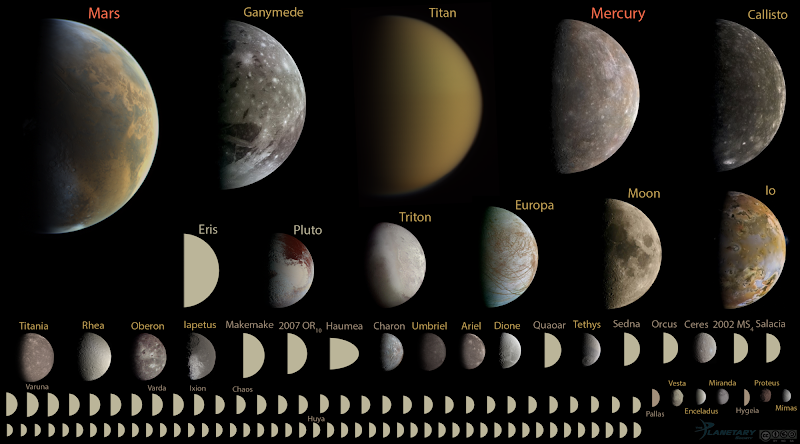Most essentially, planetary worlds (including planetary moons) are those large enough to have pulled themselves into a ball by the strength of their own gravity. Below a certain size, the strength of ice and rock is enough to resist rounding by gravity, and so the smallest worlds are lumpy. This is how, even before New Horizons arrives, we know that Ultima Thule is not a planet. Among the few facts we’ve been able to ascertain about this body is that it is tiny (just 17 miles across) and distinctly nonspherical. This gives us a natural, physical criterion to separate planets from all the small bodies orbiting in space — boulders, icy comets or rocky and metallic asteroids, all of which are small and lumpy because their gravity is too weak for self-rounding.
David Grinspoon & Alan Stern
This article kicked off once again the heated debate of Pluto’s planethood. Scientific arguments aside, it feels there are a lot of ambitions at stake here: on one side the principal investigator of the New Horizons mission to Pluto; on the other the self-titled ‘Pluto killer’ – hard to see how these two could ever come to a compromise on this matter.

But let’s return to more objective considerations. Over the years, I’ve wrote a couple of times on the blog about arguments both pro and contra of considering the newly discovered ‘dwarf planets’ fully-fledged planets. The more I think about it though, the less sense it makes to define a planet by its orbital characteristics. We have the good fortune of living in a stable solar system, where orbits hardly change for eons – life would probably not have evolved this far otherwise. But we shouldn’t use this single example as some ‘gold standard’ to define astronomical objects. Other systems are much more turbulent, some even featuring gas giants with crossing orbits. Consider the early days of this solar system as well, when (proto)planets smashed into each other or got ejected from the system altogether; did they cease to be planets as they left the solar system? Or imagine Pluto as the largest object orbiting a dwarf red star: would that suddenly transform it into a planet? This artificial distinction based on orbital dynamics introduces more problems than it solves.
Let’s consider other astronomical objects as well: stars are defined by the thermonuclear fusion of hydrogen into helium in their cores, an intrinsic physical characteristic, independent of their location in the galaxy. We don’t ‘demote’ stars if they happen to exist inside a globular cluster alongside millions of other stars, where they can’t possibly ‘clear their zone’ of other stars. We don’t think hypervelocity stars are somehow less stars than those regularly orbiting the galactic center. The same can be said about brown dwarfs, too small to fuse regular hydrogen, but burning deuterium and lithium instead. They are also defined by an internal physical process, regardless of whether they float lonely in space, orbit other dwarfs or regular stars. The same principle should apply to a planetary definition: the most important criterion should be physical characteristics – such as roundness, or for example the ability to maintain an active core and geophysical processes for timescales comparable to the stellar lifetime.
Something like this: ‘Regarding the Criteria for Planethood and Proposed Planetary Classification Schemes’.
Post a Comment